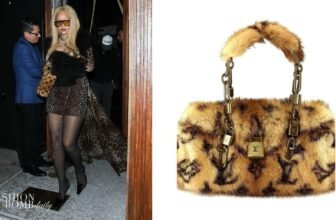
[ad_1]
“I’m through the roof,” said Gonz, who seemed dazed by the scale of the 65-look production, which also included hybrid mackintosh coats and nylon bombers with the rounded arms of a vase, and tailored pleated skirts worn over matching trousers. “She takes things that are so simple and so known, like blazers and bomber jackets, and makes them incredible,” said Yotka. Her genius, Yotka added, is in how Abe “is able to add these utilitarian or technical details in a way that isn’t clunky. You can stomp through the city in Sacai and just feel crazy and powerful.”
Backstage, I asked Abe how she knows when to stop designing a piece. Her work is so detailed and fascinating to look at but somehow never overdone or gimmicky. “It’s a very good question,” she said, “but I simply design what I would wear. It’s not just about the show. I want people to actually wear the clothes.” By that standard, on the streets of Paris and elsewhere, she is absolutely succeeding.
It’s the billion-dollar question of the season: How do you, as a fashion designer, get people to actually wear your clothes? This might sound painfully obvious, but I want to draw a distinction between this task and a related one, which is how to get people to buy your clothes.
During the pandemic-induced surge in online shopping and subsequent revenge spending on outfits for events and weddings and vacations, brands have recently had no problem with the buying part. The luxury industry broke free of gravity, and based on sales numbers, basically every designer looked like a genius. But now the industry is coming back down to earth as consumers return to their regular spending habits, and economic forecasters—the only trend forecasters who matter in fashion these days—are reporting stormy weather ahead. Which is to say nothing of the current state of global affairs, which caused Rick Owens to move his big-top show into his own home out of respect for what he called the “barbaric times” we live in.
Meanwhile, men’s relationship to clothing has continued to evolve. “I feel men are starting to kind of copy women’s shopping behavior,” Jockum Hallin of Our Legacy told me. “The guy will invest in the pieces that are shown and visible. But instead of a big fancy bag, maybe they’ll get a big coat.” Men are, in other words, increasingly discerning and tasteful, and expect to use the stuff they buy for years rather than resell it (which is increasingly challenging—there’s too much stuff!). Which all adds up to the fact that men’s fashion designers, expected to keep the growth party going, need to be more sophisticated and persuasive than ever.
Some designers proposed a return to classicism, and a few of Abe’s countrymen had the most novel visions for how to make tailoring and outerwear look dynamic and new. Junya Watanabe was so good that all the hungover editors who missed the 10:00 a.m. show grumbled for the rest of the week. Watanabe, who said via translator he “wanted to propose a new way of showing jackets,” tailored pant legs—trousers, khakis, and jeans of all varieties—onto the hems of blazers, creating an incredibly cool opera-coat shape out of mixed-up fabrics. There was an actual opera cape, too, made in collaboration with Palace, whose mark was embroidered on the back (another way to introduce elegance to a younger customer).
[ad_2]






